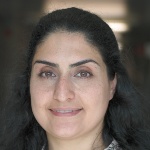Research in Project Area D
Project Areas A to C share many conceptional challenges. In particular, the visualization of both simulation and experimental results, the definition and execution of benchmarks for model and code validation, the evaluation and analysis of benchmark results as well as the technical and numerical coupling between different parts of the multi-physics and multi-scale simulation environments are common issues in several research areas. The goal of Project Area D is to exploit synergies in these fields by tackling these issues in a unified way.
Projects
D01: Visualization of multi-field processes in porous media
The long-term goal of this project is to develop new visualization techniques to support the projects of the CRC in understanding flow, transport, and deformation phenomena occurring at interfaces in and around porous media. This requires the integrated visual analysis of processes captured across multiple fields to relate different quantities, analyse simulation ensembles, and compare simulations against experiments. The interactive exploration of large and heterogeneous volumes of data is achieved by efficiently using parallel architectures as well as in-situ data aggregation.
D02: Parallel numerical coupling methods for interface problems
The aim of the project is to provide technical and numerical methods for the coupling of free flow and porous-media flow at the REV (representative elementary volume) scale. This involves the development of sophisticated methods in three basic coupling components: (i) iterative solvers ensuring a fast convergence towards the correct solution of the coupled system, (ii) data mapping between different discretisations used in the computational components of the simulation environ-ment, and (iii) point-to-point communication between several parallel codes.
D03: Development and realisation of validation benchmarks
The goal of this project is to formulate and conduct benchmarks which assist in the validation of several computational models developed within the proposed CRC. Here, the main challenge arises from the possibly large uncertainties that are present in the experimental data as well as in the simulation results. A so-called validation metric which compares system response quantities of an experiment with the ones from a computational model has to integrate these uncertainties in a rigorous way. In the proposed project, such validation metrics will be developed by means of a Bayesian validation framework that incorporates parameter and conceptual uncertainty.
Contact

Samaneh Vahid Dastjerdi
Dr.-Ing.Postdoctoral Researcher, Management, Project MGK, Central Project Z

Kundan Kumar
Prof.Mercator Fellow, Research Project B03



